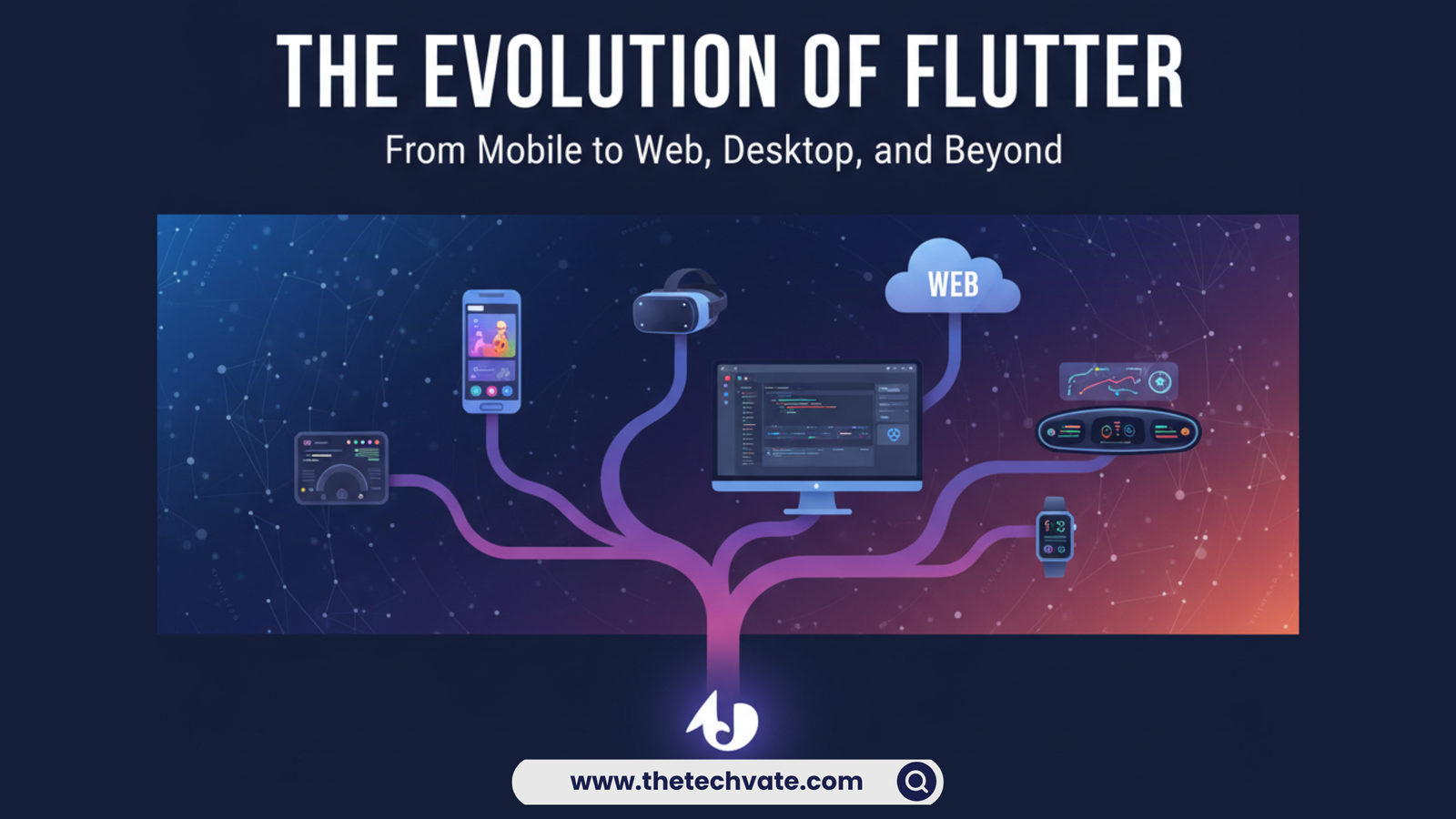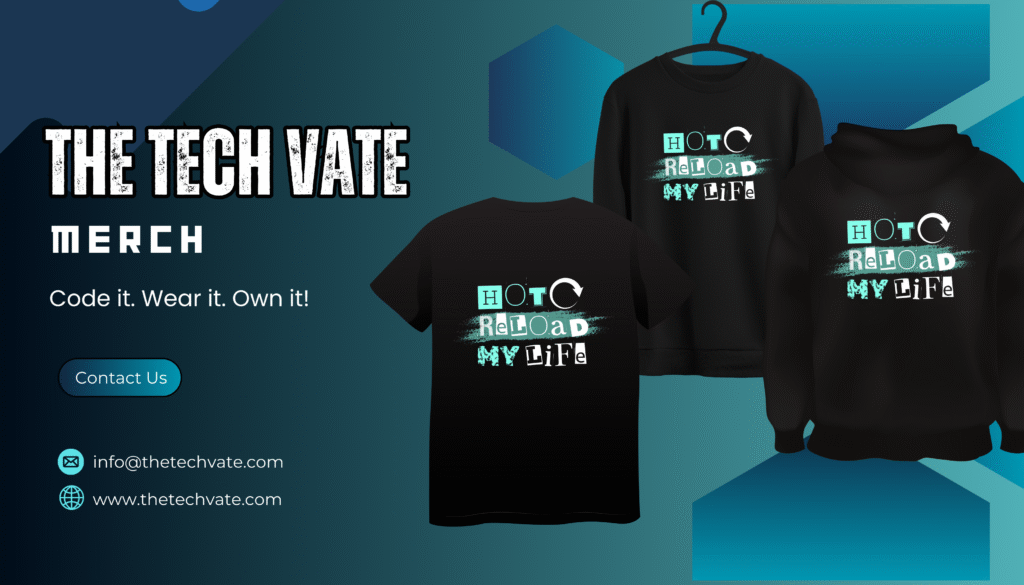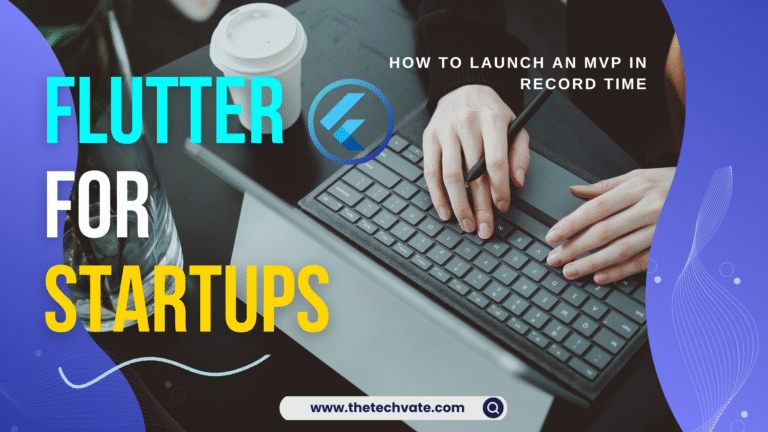Every once in a while, a piece of tech comes along that doesn’t just change how we code — it changes how we think about coding.
For years, developers were stuck in what we can politely call “The Great Divide.” Android developers lived in their Kotlin castles, iOS developers guarded their Swift kingdoms, and the rest of us — the poor cross-platform wanderers — wandered between them like digital nomads carrying too many USB cables.
Then one day, in a quiet corner of Google HQ, someone said:
“What if we stopped fighting and just… built everything with one framework?”
Enter Flutter, Google’s bold, blue butterfly that fluttered into our lives and whispered, “You can build anything.”
Chapter 1: The Birth of a Blue Butterfly
Let’s rewind to 2015. Google was experimenting with something called “Sky,” an early prototype that could render 120 frames per second on Android. It wasn’t much yet — more like a neon caterpillar than a butterfly — but the idea was powerful:
“What if UI could be rendered by a framework, not by the system?”
That single question planted the seed for what would become Flutter.
In 2017, Flutter spread its wings. Developers at Google I/O saw it for the first time — fast, smooth, and strangely joyful to use. It promised hot reload, native performance, and a single codebase that worked across Android and iOS.
Naturally, most developers said, “Sounds fake, but okay.”
And then they tried it.
Suddenly, buttons appeared instantly. Animations were buttery smooth. The code felt alive.
The skeptical crowd turned into fans overnight. Flutter wasn’t just another “framework-of-the-month.” It was… fun.
Chapter 2: Flutter Finds Its Feet — and Phones
The first goal was simple: conquer mobile.
Flutter 1.0 launched in December 2018, officially declaring,
“We’re not in beta anymore, baby.”
And it delivered. Developers could finally write one set of Dart code and deploy it to both Android and iOS.
No more building two apps.
No more testing two versions.
No more crying over mismatched pixels.
For the first time, developers felt liberated. The dream of “write once, run everywhere” was no longer a cruel joke. It was real.
Startups loved it. Indie developers loved it. Even some enterprise teams — the ones who usually move slower than a Windows XP startup screen — began to take notice.
Chapter 3: Flutter Spreads Its Wings
But Google wasn’t done. Flutter had bigger dreams.
Because why stop at mobile?
The team asked themselves, “If Flutter can render on a phone, what’s stopping it from running on a desktop? Or a web browser? Or your toaster?”
So they got to work.
In 2019, Flutter for Web arrived.
Suddenly, your mobile app could run in a browser — no extra code needed.
Developers screamed in disbelief. (And maybe a little terror.)
Cross-platform development had finally gone cross-dimensional.
Then came Flutter for Desktop — Windows, macOS, and Linux. It wasn’t perfect at first, but it worked. Slowly but surely, developers started experimenting.
One framework. One language. One codebase.
And seven platforms.
It was like watching your cute little houseplant turn into a full-blown forest overnight.
Chapter 4: Why It Worked (and Why Others Didn’t)
Let’s be honest — Flutter wasn’t the first to promise cross-platform glory.
We’ve seen many valiant attempts: Cordova, Xamarin, React Native… they all had potential, but each came with trade-offs.
Some relied too heavily on web views (basically putting a website in a mobile app costume).
Some struggled with performance.
Some just made debugging feel like a horror movie.
Flutter said:
“What if we skip the middleman and draw everything ourselves?”
That’s the genius.
Flutter uses its own rendering engine — Skia — to paint every pixel directly onto the screen. It doesn’t rely on native UI components.
So when you build a Flutter app, you’re not “imitating” the OS design — you’re creating your own. It’s why Flutter apps look and feel the same across platforms, down to the last pixel.
It’s bold, it’s brilliant, and yes, it’s a little rebellious.
Chapter 5: The Art of Consistency
Consistency is Flutter’s superpower.
No matter where your app runs, it looks and feels the same.
Designers love it because their pixel-perfect vision stays intact.
Developers love it because they don’t have to fix “that one button that looks weird on iPhones.”
And users?
They just think your app feels smooth and professional.
It’s the small things — animations that don’t stutter, transitions that glide, text that looks crisp everywhere.
Flutter doesn’t just make apps work. It makes them delightful.
Chapter 6: The Brain — Dart
Of course, none of this would be possible without Dart, the language that powers Flutter.
At first glance, Dart seems like just another programming language in a sea of too many. But look closer — it’s surprisingly clever.
It compiles directly to native code (for speed), but also runs in a just-in-time mode (for fast hot reloads). It’s flexible enough for rapid development and robust enough for production.
For beginners, Dart feels intuitive — clean, modern, and a little bit like JavaScript after therapy.
And because Flutter controls its own rendering, Dart doesn’t have to beg the operating system for favors. It just gets things done.
Chapter 7: Flutter Meets the Web
When Flutter for Web entered the scene, many developers said,
“Wait, you can run mobile code in a browser? Are you okay, Google?”
Turns out, Google was more than okay.
Flutter Web takes the same Dart code and compiles it into JavaScript, HTML, and CSS — the holy trinity of the web.
The magic?
You don’t need to rewrite your app. You can take your existing mobile code, tweak a few lines, and voilà — it runs in Chrome, Safari, or even that one person’s outdated version of Edge.
Suddenly, the line between “mobile developer” and “web developer” started to blur.
Chapter 8: Desktop Dreams
Next came the desktop.
Building apps for Windows and macOS used to mean dealing with outdated SDKs, weird libraries, and user interfaces that looked like they belonged in 2005.
Flutter looked at that chaos and said, “Hold my widget.”
With Flutter 2 and 3, you can now build full desktop apps — complete with resizable windows, keyboard shortcuts, and native menus.
Your app doesn’t just run on desktop — it belongs there.
It’s not an afterthought; it’s a natural extension.
And just like that, Flutter wasn’t just a mobile framework anymore. It was a universal toolkit.
Chapter 9: Flutter in Cars, TVs, and Everything Else
If you thought Flutter would stop there, you clearly underestimated the butterfly.
Now it’s spreading into embedded systems — from smart displays to automotive dashboards.
BMW, Toyota, and even Google’s own products have started using Flutter to power their in-car interfaces.
Imagine controlling your car’s air conditioning with a Flutter app.
Imagine your coffee machine showing a Flutter-based dashboard.
Sounds ridiculous?
Give it a few years.
Flutter’s goal is simple:
“If it has a screen, Flutter should run on it.”
And they’re getting closer every day.
Chapter 10: The Vision Ahead
So where does Flutter go from here?
The short answer: everywhere.
Google’s long-term vision for Flutter is a unified development experience — one framework to build every type of digital interface.
With each release, Flutter becomes faster, more stable, and more powerful. The new rendering engine, Impeller, promises smoother performance and better graphics.
Web support is improving, desktop is maturing, and the community is booming.
It’s not just about convenience anymore — it’s about creating a universal design language that transcends platforms.
Chapter 11: What It Means for You
If you’re a beginner developer, here’s why this evolution matters:
You don’t need to pick sides between iOS and Android.
You can learn one framework and build apps that reach everyone.
You can experiment freely — without endless setup headaches.
Flutter gives you superpowers. It lets you focus on creativity, not configuration.
And as it grows beyond mobile, the opportunities are endless.
Today, you might build a phone app.
Tomorrow, you could deploy it to desktop.
Next year, it might run on a car dashboard.
All from the same codebase.
Chapter 12: The Flutter Philosophy
At its heart, Flutter is more than a framework — it’s a mindset.
It represents a new era where developers don’t have to choose between beauty and efficiency, design and speed, or creativity and practicality.
It says, “Let’s build once and reach everyone.”
That’s not just convenient — that’s revolutionary.
Final Thoughts: The Butterfly Effect
The funny thing about Flutter is how fast it’s evolved.
In just a few years, it’s gone from an experimental project to a full ecosystem — from phones to browsers to desktops to dashboards.
It’s like watching a caterpillar turn into a butterfly, then realize that butterfly can also code, design, and drive a car.
The evolution of Flutter isn’t just about technology — it’s about empowerment.
It’s about giving developers freedom.
It’s about turning “What if?” into “Why not?”
So the next time someone asks you what Flutter is, you can smile and say:
“It started as a mobile framework… and now it’s everywhere.”
Because that’s the beauty of Flutter — it never stops evolving.













